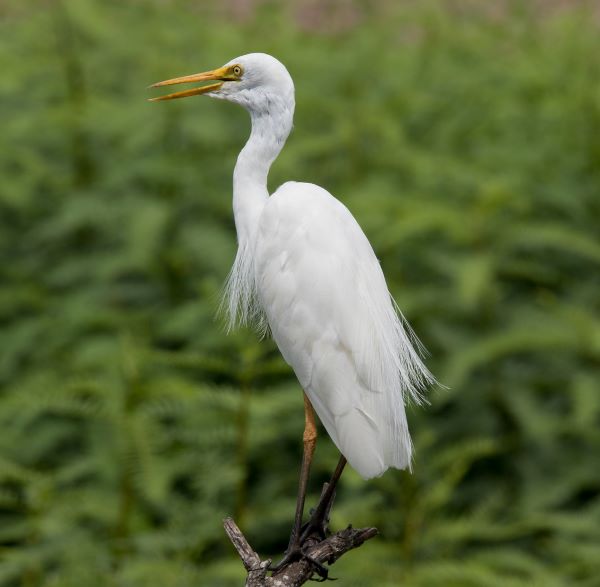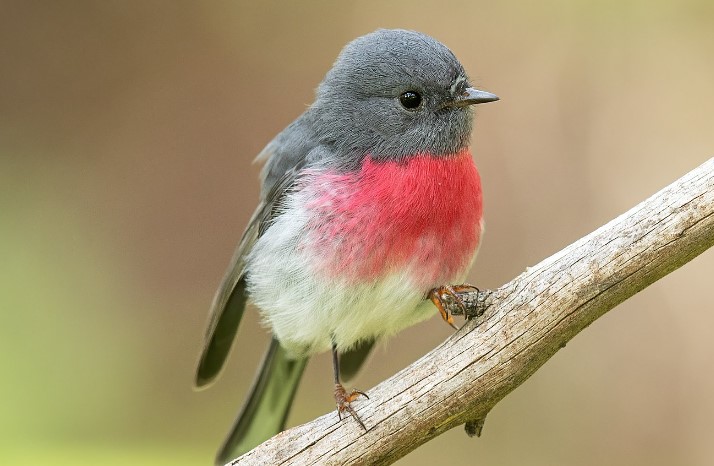Family: The Intermediate Egret (Ardea interrnedia) is a member of the heron family Ardeidae in the genus Ardea. Some authorities classify the intermediate egret within the monotypic genus Mesophoyx. However, others place it in the same genus as the smaller egrets, Egretta.
Habitat: Lacy filamentous plumes on the back and breast grace the Intermediate Egret when it breeds. It frequents shallow waters, mud banks, and dry pasture around freshwater lakes and rivers. It hunts slowly and carefully, either by itself or in small, dispersed groups. Courtship involves flight, twig-shaking, snapping, and stretching displays, as seen in other egrets. Nesting colonially in trees, both sexes incubate, changing over with a spectacular fanning of plumes.
Identification: Both adults’ sexes are similar. General plumage is unfirmly white. In breeding plumage, long white nuptial plumes are on the back and breast, those on the back extend beyond the tail. The eyes are yellow. Naked face: blue-green. The bill and legs are red. The feet are black. In non-breeding plumage, there are no nuptial plumes; the face is green-yellow. Bill is yellow-orange. The legs are flesh-brown. The immature are like non-breeding adults. The downy young is dull white.
Diet: The bird may make fewer than one jab a minute for food, but is successful in two out of three strikes. Occasionally, it hovers to dive on prey in deeper water. The small fish are staple diet, but frogs, insects and crustaceans are also taken
Vocalizations: Intermediate Egret call is loud croaking in alarm; bi-syllabic croak and hoarse buzzing at nest.
Nesting and Breeding: Intermediate Egret nesting occurs colonially with other herons, mainly in spring in the south and late summer in the north. Nest made a platform of sticks in trees. They are said to be very effective breeders in Australia and Africa, where 96% and 88% of nests produce at least one fledgling, respectively.
Eggs and Incubation: The bird lays three to six eggs, pale blue-green, oval, about 46 x 35 mm. The incubation period is about 25–27 days for both sexes. Young fledge in 35–40 days. The adults care for the semi-altricial young for a duration of 12 days after the eggs hatch asynchronously. Throughout the incubation and brooding phases, they protect their nests from aerial predators by crouching over them, raising their plumes, and pointing their bills in the direction of the intruder.
Distribution: The intermediate egret is found in eastern and northern Australia, as well as in New Guinea, southern Asia, and warmer Africa.
Names in other languages:
-
Danish: Mellemhejre
-
German: Asienmittelreiher
-
Spanish: Garceta Intermedia
-
French: Aigrette à bec jaune
-
Italian: Airone bianco intermedio
-
Norwegian: Duskhegre
-
Swedish: Mellanhäger
Races: The IOC approved the division of the intermediate egret into three species.
-
brachyrhyncha (“yellow-billed egret”), Found in sub-Saharan Africa
-
i. intermedia (“intermediate egret”) Found in Asia, from the Russian Far East to Japan to India and the Greater Sundas
-
plumifera (“plumed egret”), found in eastern Indonesia, New Guinea, and Australia.
Other Names: It is also known as a smaller egret, medium egret, yellow-billed egret, and plumed egret.
Size: Intermediate Egret length is about 600–620 mm in length and weighs 380–400 grams with a wingspan of 110–115 cm.
Read More: Little Egret (Ardea garzetta)

Reference: Wikipedia






